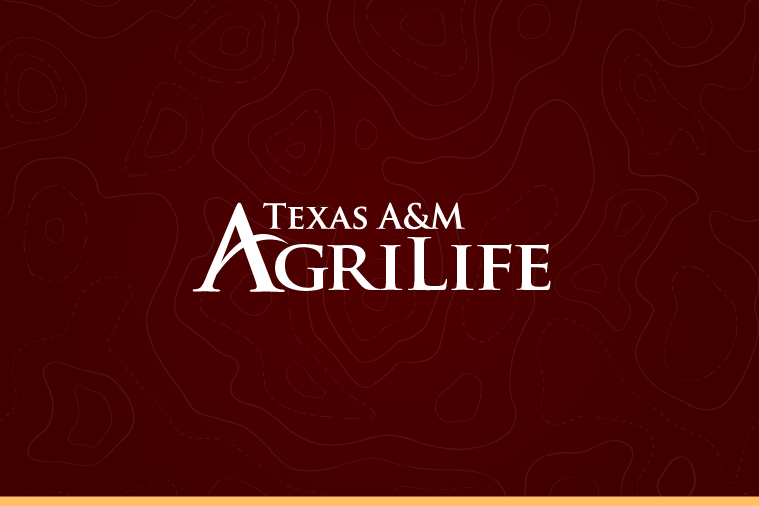Five important reminders when finding ‘orphaned’ wildlife
Texas A&M AgriLife expert shares advice to keep young wildlife wild
While enjoying the outdoors this spring and summer, you’ll likely encounter young wildlife. Although it may be tempting to help a lone baby animal, experts warn intervening can often do more harm than good — and may be illegal.

Ashley Long, Ph.D., associate professor and Caesar Kleberg Endowed Chair in Wildlife Ecology in the Texas A&M Department of Rangeland, Wildlife and Fisheries Management, emphasized the need to understand wildlife behavior before acting.
“Many of the natural adaptations and behaviors we see juvenile wildlife display can be easily misinterpreted as requiring human intervention,” Long said. “This often leads to unnecessary human and wildlife encounters that are potentially harmful to the animal, unsafe for people, and even against state and federal laws.”
To help protect young wildlife and ensure they thrive in their natural habitat, Long offered five key tips to remember when you find wildlife that appear to be orphaned.
1. It’s illegal to keep wildlife without a permit
According to the Texas Parks and Wildlife Department, the state agency responsible for managing and protecting wildlife and wildlife habitat, possessing wildlife without a permit is illegal.
“People, including professional biologists and wildlife rehabilitators, are required to possess permits to handle, house or transport wild animals,” Long said. “In addition, local rules and regulations regarding wildlife may apply to you depending on where you live.
“These laws are in place to make sure people have the necessary training and facilities to keep both people and animals safe.”
2. Wildlife parenting looks different than human parenting
While it may be unthinkable for a human to leave a child alone for several hours, it’s common among wildlife.
“In the wild, adults often leave their young alone while they search for food or to protect the young from predators,” Long said.
For example, white-tailed deer fawns typically spend a lot of time away from their mothers shortly after birth.
“Within hours after birth, a doe will move the fawn to another area, and the fawn will instinctively bed down in vegetation,” Long explained.
The doe will return from foraging throughout the day to nurse. However, she stays away for long periods to prevent attracting the attention of predators that would harm her young.
Long said the does also consume the waste produced by fawns, reducing additional scents to help keep them safe and hidden.
If a human comes across a lone fawn, Long said it’s unlikely the mother abandoned it. The doe is usually nearby and will return when it’s safe.
3. Young wildlife must learn survival skills
Like human children, young wildlife must learn how to navigate the world. And, just like humans, this learning period isn’t always graceful.
Take baby birds, for instance. As they grow flight feathers while still in the nest, the nestlings flap their wings to build muscles necessary for sustained flight.
Additionally, Long said it’s common for baby birds to leave the nest before they have perfected their flight skills.
“Young birds that have recently fledged often spend time on the ground or hopping from branch to branch before they get the hang of things,” she said. “They’ll progressively take longer flights and eventually develop the strength and coordination needed to fly longer distances and at greater heights.”
One common myth is adult birds abandon nestlings if they detect human scent. While it is generally best to avoid handling baby birds, Long said gently returning a baby bird to its nest in an emergency is unlikely to cause harm.
4. Good intentions can sometimes cause negative outcomes
Some young wildlife may hunker down rather than flee when approached. This behavior can be mistaken for abandonment or distress, but it is often a survival tactic.
According to the Texas Parks and Wildlife Department, a study conducted by a state-certified wildlife rehabilitator found that, in some years, more than 40% of the fawns brought to them for care were not orphaned or injured. Instead, someone took these fawns from their mothers by mistake.
Based on anecdotal data, they believe the situation for baby birds is similar, if not much more common.
“Many believe mother birds never leave their nest unattended, but that’s not true,” Long said. “Adults must leave the nest to forage for themselves and their young, remove waste, and gather materials if the nest needs maintenance.”
She said leaving the nest can also help reduce the risk of attracting predators and aid in chicks’ temperature regulation. And, as the babies get older, their parents’ absence encourages them to fledge.
Interrupting these natural patterns could have unintended consequences.
5. Know when and who to call for help in Texas
Around a home, if residents spot a baby animal in a flower bed or a bird out of its nest, it’s best to leave the animal alone and secure any pets, such as dogs, that may bother the young or prevent the mother from returning.
However, when wildlife are in a place where they might be harmed or put people at risk, witnesses should notify a Texas game warden.
“For example, if you find a fawn near a roadway or place of business, contact a game warden so the fawn can be safely removed,” she said. “In cases warranting intervention, game wardens should always be the first point of contact for concerned residents.”
State-certified wildlife rehabilitators are also an important resource if animals are obviously sick, injured or orphaned. You can search for a wildlife rehabilitator near you on the Texas Parks and Wildlife site.
“Wildlife are among our most precious natural resources,” Long said. “By better understanding their behavior, adaptations and life cycle, we can prevent unintentionally stressing or harming young wildlife as they take their first steps or first flights into the world.”





